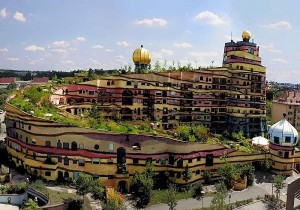You’ve probably heard your fair share of talk about the idea of “green building,” but how does it apply to those who rent instead of own? Homeowners may pursue solar panels and low-flow toilets, but is living green restricted to the single-family home? Not necessarily.
If you prefer to dwell in a community-living development (like apartments or condos), there is much you can do. Let’s break down several key aspects, discuss where they are now and investigate what eco-friendly options you can look forward to in the future.
Location, Location, Location…
… is the first rule of real estate, because where you live matters. Believe it or not, the location of your development also affects its eco-impact.
Where It’s At: When urban sprawl was at its heyday, it generally received negative publicity from an environmental standpoint. The idea of spreading new development out into the suburbs meant more land being used, more cars on the road, longer commutes and a decrease in land and water quality. But cities have begun to draw people back to their centers again.
In a recent study, the U.S. EPA found that building permits doubled for city redevelopment in the last nine years. Cities are building closer to not only incentivize residents to stay near, but also to bring back those who left. As more cities try to improve their downtowns and add amenities from sports stadiums to theaters, residential development continues to follow.
Redeveloping existing land makes environmental sense, because there’s less need to use new resources to create new structures and foundations and install power lines and water pipes. It generally follows that updating an existing structure requires less energy and materials than a new one.
Where We’re Headed: Expect more of the centralized residential building boom in cities, as it currently accounts for over one-fourth of new residential construction in places like Chicago, Miami and San Francisco. It might not be ideal for single-family homes, but apartment high-rises near city landmarks show no signs of slowing down.
Worried about traffic? The development of new and improved public transportation compensates for less available parking. Phoenix opened a light-rail system in December 2008, and Charlotte is in the process of expanding its LYNX light-rail service to reach more of the city by 2015.
Handling Your Trash
One of the typical perks of single-family housing is the presence of curbside disposal. In many cases, separate trucks pick up recyclables as well as trash. But how do you recycle in a shared space?
Where It’s At: For those who live in community-living developments, recycling isn’t as widespread as it is in traditional neighborhoods. The current solution for recycling is most likely to find a nearby drop-off location for anything you’re looking to recycle. For example:
- Paper recycling bins can often be found in school or grocery story parking lots
- 11 different states currently offer redemption centers for beverage containers
- Retail stores accept everything from electronics to CFLs
Where We’re Headed: In some communities, curbside recycling is offered, but complexes may not be taking advantage of these services. For instance, the City of Tampa charges a one-time fee of $100 for a 14-gallon recycling bin, and picks it up for free. But in 2007, only about 20 percent of multifamily buildings took advantage.
Some landlords note potential contamination (ie: residents placing non-recyclables in the bins, resulting in warnings or fines from collectors) and space issues as deterrents for recycling programs. But, if you don’t ask, you’ll never get what you want. It can often be as simple as discussing recycling options with a landlord or management company. If enough residents show a desire for recycling, it will likely be investigated.
Community Features

While you may not be moving to Germany any time soon, living roofs and less wasteful set-ups like these are the future of community dwellings. Photo: darmstadt.de
When you’re deciding where to live, what are the must-haves on your checklist?
- A pool and fitness center?
- Covered parking?
- An outdoor picnic/barbecue area?
In eco-friendly communities, you can have everything on your checklist without compromising your earth-friendly ideals.
Where It’s At: One of the easiest ways to go green is to plant green. Trees and gardens not only brighten the appearance of developments, but they absorb toxins and improve air quality. Also, communities that use native vegetation will save on water expenses, a cost usually left for residents to pay.
Another concept embraced by many complexes is timed lighting. Keeping the complex well-lit at night is important for safety reasons, but putting these lights on a timer saves energy and keeps electricity bills lower during daytime, peak hours.
Where We’re Headed: It’s estimated that 50 percent of homes built in 2010 will be green. But community-living developments often take better advantage of their sometimes limited space, even if it’s on the roof to incorporate these green features.
For example, in Pittsburgh, a condo development called E Lane is equipped with outdoor features like native plants, rain barrels to capture and reuse rain water, an organic vegetable garden and compost area for food waste.

Trey Granger
Trey Granger is a staff member at Earth911.com.